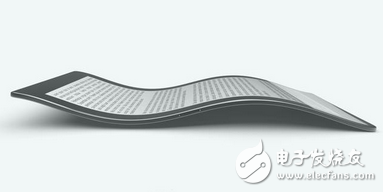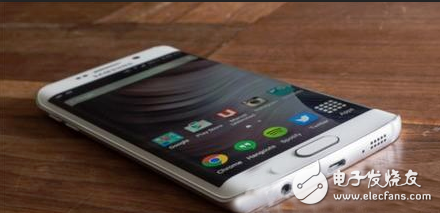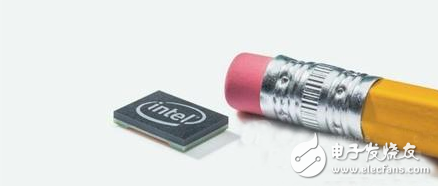
So where are they?
It turns out that making real-world flexible devices is harder than imagined by futurists and filmmakers. In technology feasts such as CES, more and more manufacturers are showing flexible technology, but they all show a single function, that is, a curlable screen and a stretchable circuit. In the real world, it is a very difficult problem to bundle these functions into a small tool.
At present, some of the major obstacles faced by flexible electronic products, such as the development of technologies such as stretchable circuits and bendable batteries, are being gradually overcome in research laboratories around the world. If these obstacles are eventually overcome, future electronic products will be difficult to damage, react more to the environment around them, and the way humans interact with them.

In the fall of 2014, Apple released the iPhone6 ​​and iPhone6Plus smartphones, but then fell into a "curved door", and many users were deeply disturbed. At present, the flexibility of many devices is still very low, mainly because electronic products are composed of many complicated components, most of which are not bendable. For example, the processor is still etched on a silicon wafer, and the consequences of bending the lithium-ion battery in the handset are also unthinkable.
So far, there are not many merits in the flexible electronic products that exist in the real world. Some great flexible technologies are still in the stage of “paper talkâ€. As early as 2012, Wexler released its first flexible e-reader, and in 2014 Sony released the DigitalPaper, a reader with a flexible E-ink electronic ink screen. In essence, there is no exciting place for e-readers, but the Sony DigitalPaper uses a 13-inch flexible electronic ink screen (although it costs £600), which hints at the future of flexible tablets.
Now, two years have passed since the release of Sony DigitalPaper, but we still haven't seen a flexible tablet because no one has found a solution for manufacturing components such as flexible processors, memory and batteries. The components of the two flexible e-reader products we mentioned above are hard-wired behind the flexible screen.
Then there are some smart phones with flexible screens in the market, such as LGFlex2 and Samsung Galaxy S6Edge. However, as we have seen, a flexible screen is not equal to a flexible phone, and the user gets nothing more than a phone that fits the face better when making a call, or can be viewed through the side screen. Some notifications. In short, flexible screen phones are still only a peculiar gimmick, not a really useful feature.
For larger devices, Samsung has already shown a 105-inch curved screen TV, but it is not really a flexible device. All of this can be attributed to the lack of flexibility in certain key components. Imagine that these components are placed inside flexible electronic devices, including wires, batteries, processors, and memory. If you want to be truly bendable, these parts must first be bendable and they bend. The pace and the range of motion must be consistent, otherwise it will collapse and scatter, and the electronic circuits inside the electronic device will no longer be neat.

And if you want something that can be transformed into a more complex shape, for example, you want a tablet that can be curled and collapsed like paper. You can repeat our imagination again, maybe in the end you will destroy the components inside the tablet, after all, the electronic components are not easy to be truly scalable. It is basically impossible for electronic products to be truly scalable, at least not easy.
Below, let's talk about flexible circuits, this technology has begun to mature. Often, flexible circuits are made up of conductive stretched polymers that have evolved over the past decade. In 2008, flexible circuits were able to maintain their electrical conductivity at about 70% extension, and now they can stretch to 1000% of their original length. In general, elastomeric polymers can create a stretchable printed circuit board, just like the new stretchable board that Panasonic released last year.

John Rogers, a professor of engineering at the University of Illinois, said: "The development of the traditional semiconductor industry is to move toward miniaturization, which is to make products smaller and thinner. For flexible electronic products, this trend is relevant and Importance. This means that some components, such as radio antennas and simple sensors, will become smaller, slimmer and more flexible.
The proliferation of smartphones and wearables will eventually lead to smaller and smaller chips, like Intel's "Mur Curie", which includes a processor, simple sensor and Bluetooth in its button-sized body. As Rogers puts it, the smaller the volume of inflexible components, the better the future of flexible devices.

However, for the battery, this theory is not established. Rogers said: "Power supply is an obstacle, you can make most of the components small enough to finally achieve your flexibility, but the battery is different, because the battery capacity is determined by its volume. If it is to be It’s done very thin to achieve its flexibility, and its battery life will be short.â€
At this time, wireless power may be the best solution. Rogers pointed out: "In fact, in this case, all you have to do is create a flexible antenna to receive power." Currently, there are already labs in Seattle that are testing this technology. There, the device's Wi-Fi data stream captures the oscillating signal and converts it to DC. Currently, this technology can only meet small devices. However, in this year's CES, we saw Ossia's wireless system charging the iPhone for half-air, and this technology is likely to be officially commercialized by the end of 2016.
Ultimately, flexible technology will inevitably be realized in consumer electronics, and all we have to do is wait patiently. One day in the future, we will be able to roll up a huge mobile phone into our pocket.
Outdoor Led screen Kiosk as led poster is a very effective, eye-catching medium which can be fabricated as per the requirement of the application. A Outdoor Led Poster or Led screen kiosk in a standee with has an in-built player connected to the screens which can be updated from any remote location by using digital signage software. This medium can be used to welcome guests, advertise products as well as disseminate important information relevant to its viewers.
outdoor led screen Kiosk can have multiple led screens connected. The led screen poster can be used for advertisement but also the whether information and other tasks like online surfing, bill payments, shopping, etc for its users.
Outdoor Led Poster,Floor Standing Outdoor Led Poster,Outdoor Mobile Led Poster,Outdoor Led Flag Screen
Shenzhen Priva Tech Co., Ltd. , https://www.privaled.com